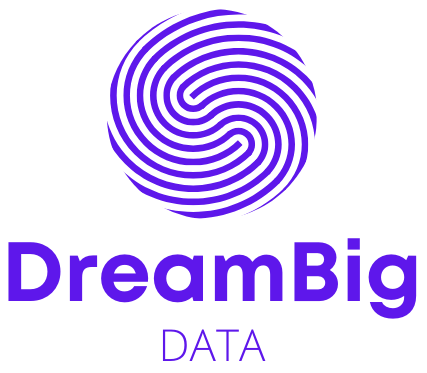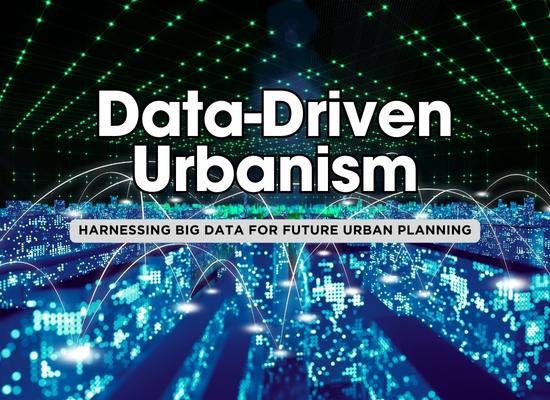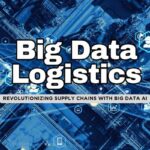As urban populations grow and cities become more complex, the need for efficient, sustainable, and forward-thinking urban planning has never been greater. Big data has emerged as a transformative tool, enabling city planners, governments, and organizations to make data-driven decisions that shape the cities of tomorrow. From analyzing traffic patterns to predicting the environmental impact of construction projects, big data applications in urban planning promise to revolutionize how we design and manage urban spaces. This guide explores five key areas where big data is making a difference, starting with transportation planning.
Transforming Transportation Planning
Efficient transportation systems are the backbone of any city, and big data is revolutionizing how these systems are designed and optimized. Here’s how big data is transforming transportation planning:
- Real-Time Traffic Analysis:
- How it works: Big data from GPS devices, traffic sensors, and mobile apps is collected and analyzed to provide real-time insights into traffic conditions.
- Impact: This data helps planners identify congestion hotspots, optimize traffic light timings, and create alternative routes to ease traffic flow.
- Public Transportation Optimization:
- How it works: Data from ticketing systems, passenger counts, and IoT-enabled vehicles is analyzed to understand usage patterns.
- Impact: Planners can adjust schedules, add or remove routes, and improve the efficiency of public transport systems based on demand.
- Predictive Maintenance:
- How it works: IoT devices on buses, trains, and roads provide data on wear and tear, enabling predictive maintenance.
- Impact: Reduces downtime, saves costs, and ensures safer travel for citizens.
- Smart Infrastructure Integration:
- How it works: Data-driven models predict where new infrastructure, such as bridges or bike lanes, would have the most impact based on traffic and population data.
- Impact: Ensures resources are allocated efficiently and supports sustainable growth.
- Environmental Impact Assessment:
- How it works: Traffic and transportation data are combined with environmental data to model pollution levels and carbon emissions.
- Impact: Helps cities create low-emission zones and encourage greener transportation options.
Data-Driven Housing and Zoning Decisions
Housing shortages, affordability issues, and urban sprawl are major challenges for city planners. Big data provides actionable insights to address these issues by transforming how housing and zoning decisions are made.
- Predicting Housing Demand:
- How it works: Data from population growth trends, income levels, and migration patterns is analyzed to forecast future housing needs.
- Impact: Enables planners to proactively develop housing projects and allocate resources to areas with anticipated growth.
- Optimizing Land Use:
- How it works: Satellite imagery, geospatial data, and economic activity datasets are analyzed to determine the best use of available land.
- Impact: Supports mixed-use zoning that balances residential, commercial, and recreational spaces to foster livable communities.
- Affordable Housing Strategies:
- How it works: Big data tools analyze income distribution and housing costs to identify areas where affordable housing is most needed.
- Impact: Helps governments prioritize policies and investments to improve affordability and accessibility.
- Urban Redevelopment Planning:
- How it works: Data from abandoned properties, land values, and infrastructure health is used to identify areas ripe for redevelopment.
- Impact: Encourages efficient use of urban spaces while minimizing environmental impact.
- Real-Time Community Feedback:
- How it works: Social media data, surveys, and mobile apps collect citizen opinions on zoning proposals and housing projects.
- Impact: Creates more inclusive decision-making processes and ensures community needs are met.
Big data enables planners to create cities that are more inclusive, efficient, and sustainable, helping balance the competing demands of housing and development.
Optimizing Energy and Resource Management
Efficient energy use and resource management are critical for sustainable urban development. Big data helps cities become smarter about how resources are consumed, distributed, and conserved.
- Energy Demand Forecasting:
- How it works: Utility data, weather patterns, and population growth models predict future energy demands.
- Impact: Utilities can optimize energy production and distribution, reducing blackouts and energy waste.
- Smart Grid Management:
- How it works: Sensors and IoT devices collect data on energy usage in real time.
- Impact: Enables dynamic energy allocation, integrating renewable energy sources like solar and wind efficiently.
- Water Resource Optimization:
- How it works: Big data analyzes water usage patterns, rainfall data, and pipeline networks to identify inefficiencies.
- Impact: Reduces water waste, ensures equitable distribution, and aids in planning for droughts.
- Waste Management Improvements:
- How it works: Data from IoT-enabled trash bins, recycling plants, and population density studies inform waste collection schedules and recycling initiatives.
- Impact: Enhances recycling rates and lowers operational costs for waste management services.
- Environmental Monitoring and Compliance:
- How it works: Sensors collect data on air quality, noise pollution, and emissions in real time.
- Impact: Helps cities enforce environmental regulations and implement green policies effectively.
Revolutionizing Disaster Preparedness and Response
Disaster management is a crucial aspect of urban planning, and big data plays a pivotal role in enhancing cities’ resilience to natural and human-made disasters.
- Predictive Risk Assessment:
- How it works: Big data combines historical disaster data, weather patterns, and geospatial analytics to identify high-risk areas.
- Impact: Planners can prioritize infrastructure reinforcement and develop evacuation strategies for vulnerable zones.
- Real-Time Emergency Response:
- How it works: Social media feeds, sensor networks, and GPS data provide real-time updates during disasters.
- Impact: Enables faster resource deployment, dynamic evacuation routes, and improved communication with residents.
- Infrastructure Health Monitoring:
- How it works: IoT sensors monitor the integrity of bridges, dams, and buildings, sending alerts for preventive maintenance.
- Impact: Reduces the risk of catastrophic failures during earthquakes, floods, or storms.
- Post-Disaster Recovery Planning:
- How it works: Satellite imagery and drone data assess damage and track recovery progress.
- Impact: Helps allocate resources effectively and rebuild infrastructure faster and more efficiently.
- Community Engagement in Disaster Planning:
- How it works: Big data tools analyze citizen reports and survey data to incorporate community feedback into disaster plans.
- Impact: Ensures that plans are inclusive and address the specific needs of diverse populations.
Big data transforms disaster preparedness from reactive to proactive, enabling cities to save lives and reduce economic losses during crises.
Enhancing Environmental Sustainability
Environmental sustainability is at the core of modern urban planning, and big data is driving innovative solutions for greener cities.
- Urban Heat Island Mitigation:
- How it works: Satellite and temperature data identify heat-prone areas in cities.
- Impact: Enables planners to implement cooling strategies, such as increasing green spaces and using reflective materials.
- Smart Air Quality Management:
- How it works: Air quality sensors and traffic data predict pollution trends and identify sources of emissions.
- Impact: Supports targeted policies to reduce pollution, such as emissions-based zoning or car-free zones.
- Biodiversity Preservation:
- How it works: Geospatial data maps habitats, tracks wildlife movement, and assesses land-use changes.
- Impact: Helps planners protect ecosystems while balancing urban development needs.
- Sustainable Construction Practices:
- How it works: Big data analyzes material lifecycles and energy consumption in construction projects.
- Impact: Promotes the use of sustainable materials and energy-efficient designs.
- Climate Change Adaptation:
- How it works: Climate models and big data simulate the impact of rising sea levels, extreme weather, and temperature changes.
- Impact: Guides policies for resilient urban infrastructure, such as flood defenses and energy-efficient buildings.
By harnessing big data, cities can lead the way in combating climate change and creating sustainable urban environments for future generations.
Big data is reshaping urban planning in profound ways, from optimizing transportation systems to enhancing disaster preparedness and fostering environmental sustainability. By leveraging advanced analytics and predictive models, cities can not only address today’s challenges but also anticipate and prepare for the needs of tomorrow. As technology continues to evolve, the integration of big data into urban planning will remain a cornerstone of building smarter, more resilient, and more inclusive cities around the world.



